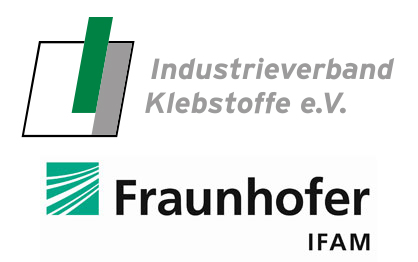5.1 Introduction
A key requirement on the substrate is that the surface layer, on which the actually adhesive bonding occurs, must be firmly attached to the substrate.
Imagine, for a moment, two steel substrates with rusty surfaces which have to be bonded. If the surface rust layer is not removed, then the bonding process merely bonds together the rust layers on the two substrates. On being subjected to a stress/load, the rust and the adhesive can detach from the substrates.
This is one of the reasons why surface treatment of the substrates is an important step in industrial bonding processes.
This section outlines the fundamental principles and describes the most important surface treatment methods for different types of substrates.
In order to select process parameters, it might be necessary in some cases to consult external advisors.
In order for the adhesive to adhere to the substrate surface, the adhesive must wet the surface.
Namely, the adhesive must intimately “flow” into the surface roughness.
Only then is it possible for adhesion forces to develop between the adhesive and substrate.
These adhesion forces have a length of less than a nanometre! (see Section 0)
1 nm (nanometre) is a millionth of a millimetre!
Namely, the adhesive and substrate must come so close together that the distance between them (not the adhesive film thickness) is less than 1 nanometre!
To achieve this, the adhesive must wet the substrate.
This is only possible by carrying out suitable surface treatment. Otherwise, the required adhesion forces will not develop.
adhesion forces in bonded joints: adhesion One nanometre (nm) = 1 x 10-9 m

Requirements on the surface for effective adhesive bonding:
- The surface must be firmly attached to the base material
- Effective wetting
- Good bonding properties
- The surface must not change in an uncontrolled way after the adhesive bond has been formed
→ In order to meet these requirements, surface treatment of the substrates is necessary!
Objectives of surface treatment:
- Improved wetting
- Improved adhesion
- Improved reproducibility of the surface
- Improved long-term stability of the bonded joints
The objective is hence to produce a defined surface that is suitable for the relevant bonding task.
In general, adhesive bonding should be carried out as soon as possible after the surface treatment in order to avoid recontamination of the surface.
The surface treatment of substrates is a key step in adhesive bonding processes.
In the simplest case, cleaning of the substrates suffices. More complex scenarios may involve several complicated surface treatment steps.
Besides improving the wetting properties, adhesion, reproducibility and long-term stability, time and costs aspects must always be considered. The following maxim applies for surface treatment: As much as necessary, but as little as possible!
The selection of a suitable surface treatment depends on a number of criteria. Any offers from adhesive manufacturers, producers of pretreatment equipment and external advisers to help select suitable pretreatment methods should be taken up.
Like for other production processes, a risk assessment must be carried out and documented in writing for surface treatment.
If hazardous substances such as primers and etching solutions are used, then all necessary information must be on the safety data sheets.
In addition, the risks from grinding dust (etc.) and any gases produced during the work must be taken into account.
Key information about matters relating to health and safety at work and environmental protection can be found in Section 7.
safety data sheetThe nature and scope of the surface treatment depends on the:
- Substrate material
- Adhesive,
- The actual state of the surface,
- The expected loads/stresses on the bonded joint
- The guidelines for health and safety at work and environmental protection
In some cases, other ssurface treatments used for other bonding processes in the production can have an effect.
In general: The more important a bonded joint is for the effective functioning of a product, the more attention must be put on the selection and execution of the surface treatment. This then prevents failure of the bonded joint, which in some cases could cause personal injury.



